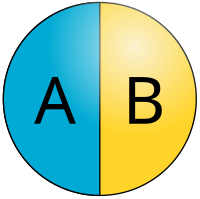
Photo from wikipedia
Abstract Janus fabrics (JFs) prepared by electrospinning with “smart” fluid manipulation capabilities have attracted considerable scientific interest. However, the fabrication of JFs with robust mechanical properties is a major challenge… Click to show full abstract
Abstract Janus fabrics (JFs) prepared by electrospinning with “smart” fluid manipulation capabilities have attracted considerable scientific interest. However, the fabrication of JFs with robust mechanical properties is a major challenge that limits their practical applications. A tri-layered JF was fabricated by introducing polyester fabric as the intermediate supporting layer and depositing hydrophilic and hydrophobic membranes on its opposing sides by electrospinning. Multiple samples of the tri-layered JFs were fabricated with the same thickness of the hydrophobic layer and varying thicknesses of the hydrophilic layer. With polystyrene fibers comprising the hydrophobic layer and polyvinyl alcohol fibers comprising the hydrophilic layer, the JFs exhibited directionally dependent water droplet transport. The penetration time of water droplets through the hydrophobic layer was found to increase and then diminish with increasing thickness of the hydrophilic layer, as did the breakthrough pressures. When the hydrophilic layer thickness was raised to 69.1 µm, the penetration time of water passing through the hydrophobic layer was minimal. The mechanical strength of the tri-layered JF structure improved dramatically compared to that of JFs absent of the supporting PET-fabric.
Journal Title: Materials Letters
Year Published: 2020
Link to full text (if available)
Share on Social Media: Sign Up to like & get
recommendations!